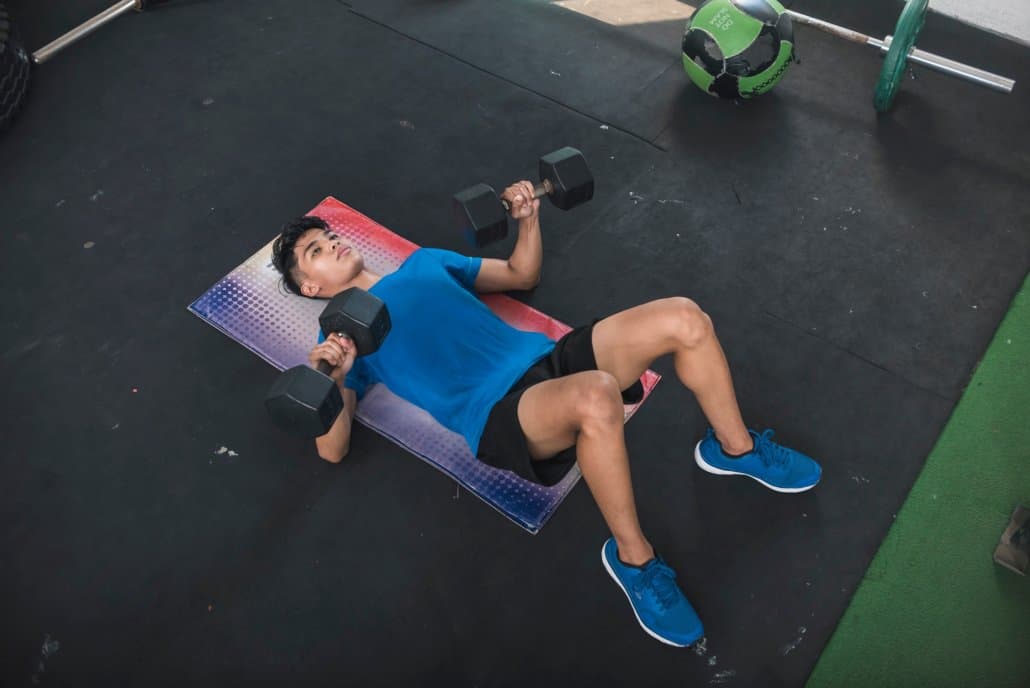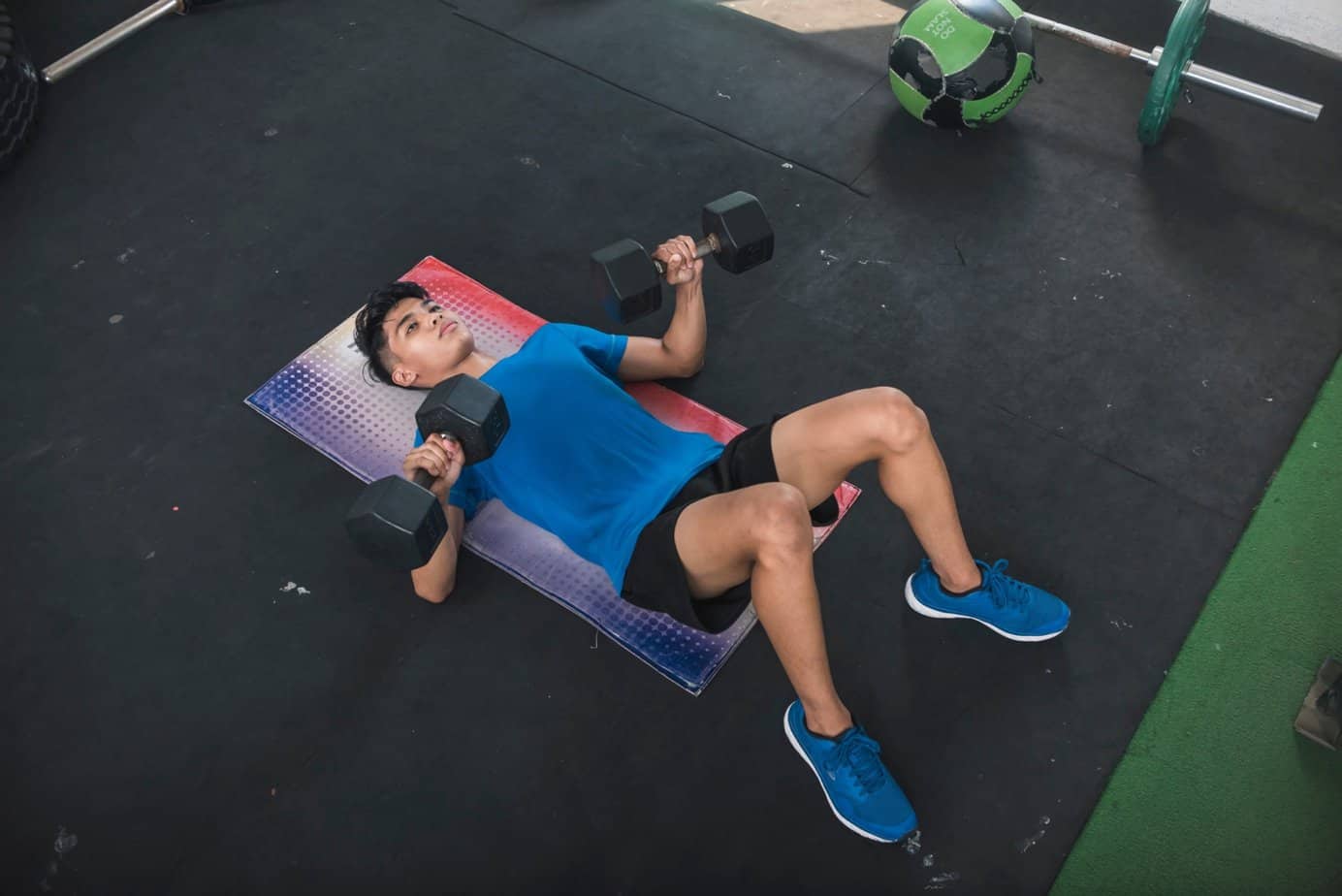How to get started with resistance training: What you need to know
Resistance training can develop increases in muscle hypertrophy, strength, power, and/or endurance. When programmed correctly, it is beneficial and safe for everybody. Here’s your ultimate guide.
Resistance training: Benefits, plans and more
Working with youth athletes, I have often left the comment “would benefit from resistance training” or “ready to be introduced to resistance training” on reports. “What is resistance training?” is a response I have often received back from parents. Sometimes I’m more worried by the parents who know what resistance training is, because a common response from this cohort is often: “is resistance training/weight training bad and unsafe for children?”
Firstly, it is important to address those who may not understand what resistance training is – it is any exercise that causes the muscles to contract against a resistance and is commonly referred to as weight training or strength training. It is used to develop increases in muscle hypertrophy (muscle size), strength, power, and/or muscle endurance. Secondly, resistance training when programmed correctly is beneficial and safe for everybody. Yes, that includes children too!
What is resistance training?
Any exercise that requires the body to overcome an oppositional force, regardless of the equipment used, is resistance training. Traditional equipment in gyms such as free weights, machines and resistance bands are the most used forms of equipment for resistance training. Also, the human body itself can be used as a resistance in bodyweight exercises, such as push-ups, squats, lunges, pull-ups etc.
If you are new to resistance training, it can all seem very intimidating and daunting but it shouldn’t be. Firstly, it is critical to understand that form and technique are most important for an exercise, and resistance should only be added once form and technique are satisfactory. Let’s use the squat exercise as an example – if a person can comfortably perform a bodyweight squat with the correct form and technique, then resistance (a barbell) can be added. But if a person struggles with a bodyweight squat, then it is unsafe and unwise to add resistance to their squat.
Types of resistance training
There are many ways to add resistance to an exercise, but bodyweight, free weights, machines, and resistance bands are popular choices.
Bodyweight:
Bodyweight training may also be referred to as calisthenics (using one’s own body as resistance to work against the force of gravity). Bodyweight training has many benefits and allows exercises to be adapted to an individual’s anthropometric make-up. It also aids in improving balance, relative strength and posture control. However, it does not provide enough stimulus to develop the strength potential of experienced individuals and it is difficult to quantify workload.
Free weights:
Barbells, dumbbells and kettlebells are all examples of equipment used in free weight training. However, innovative homemade alternatives such as filled backpacks, water bottles and jars of food can also be used. Exercising with free weights allows a greater range of motion, mimics everyday activities and transfers better to sporting movements in comparison with machine-based exercises. They require more activation of the stabilisation muscles which mainly explains their effective transfer to sporting and everyday activities. However, they require sound technique and time must be spent learning the exercise correctly.
Machines:
Machines provide safety for the lifter, and machine exercises are usually easy and quick to learn. Most machines are designed to enable a simple and speedy change of the weight load, making them convenient and practical for the new exerciser. However, most machines do not account for individual anthropometric differences, and they reduce the activation of the stabilisation muscles during the exercise.
Resistance bands:
Resistance bands come in different lengths, thicknesses, colours and designs. Usually, the colour dictates the level of resistance the band provides. They are relatively cheap and practical to use. Many exercises can be performed with resistance bands, or resistance bands can be added to free weights or machine exercises to alter the resistance profile of the lift. Free weight exercises rely on gravity so the resistance is always going to be in the direction of the ground. Resistance bands can be attached or tied to a fixed object and can provide more options for the direction of resistance of an exercise movement.
Another benefit of resistance bands is they can make some exercise techniques easier. Novice exercisers can use the elasticity of the band as an aid in exercises like a pull-up. Taking this approach can help new exercisers become familiar with the movement of the exercise. Ultimately, resistance bands can be a good investment, especially for those looking to exercise at home.
What are the benefits of resistance training?
Not that long ago, any form of training involving weights was largely considered for extraordinarily strong men competing in sports like powerlifting and bodybuilding. The ordinary individual had no motive to engage in resistance training and many athletes believed lifting weights would actually hinder their performance. Exercise became heavily promoted to counteract health problems from a sedentary lifestyle, with aerobic training being the common form of exercise. However, in recent years, resistance training has become much more common for a variety of individuals.
There are many benefits associated with resistance training – it can increase lean muscle mass, boost resting metabolic rate, aid in fat loss, improve physical performance, raise self-esteem, promote bone development, enhance cardiovascular health, prevent type two diabetes, and ease lower back discomfort. But despite the expansive research promoting resistance training, there still are low engagement rates from certain sections of people. Myths and misinformation have led to some women, youths, and older adults failing to engage in resistance training.
Benefits for women:
Despite the benefits of resistance training, only 20% of women in the US engage in resistance training two or more times per week. Worryingly, research from Hurley et al. (2018) highlighted that for every woman using the free weights section in a gym, approximately 27 men were using the same equipment. Conversely, research from Dworkin (2003) highlighted that 70% of users of cardiovascular equipment were female.
So it appears there is a gender-based stigma to resistance training because females do not want to ‘bulk up’ or ‘put on muscle’ and perceive resistance training as a ‘manly’ activity. Also, research from Harne and Bixby (2005) found a lack of time to be the main barrier to resistance training for women. Another barrier of entry is how one is perceived by others if engaging in the activity. Historically women are not associated with having an athletic body type, training with weights, or sweating during activities. Myers and Roth (1997) found women felt uncomfortable and intimidated to train in front of others for fear of being perceived as athletic, sweaty, uncoordinated, or having a lack of knowledge. Many women interested in resistance have reported a lack of interest and encouragement among friends and family. This has caused social barriers such as exercising alone without friends or support to discourage many women to engage in resistance training.
However, women who take part in resistance training can improve their health, minimise degenerative diseases like osteoporosis, reduce injury risk and improve their athletic performance. It is important to understand that due to sex-related differences, women will typically be weaker in terms of absolute strength than males because of their lower muscle quality. Nevertheless, resistance training gains in muscle hypertrophy, strength, and power are still achievable in women who regularly participate in resistance training, even though the gains might be less than their male counterparts.
When programming resistance training programs for women involved in sport, potentially emphasising upper body development may be worthwhile since absolute strength of the upper body is weaker in females. Injury prevention needs to be accounted for in programs for women too, since female athletes are four to six times more likely than males to incur an anterior cruciate ligament (ACL) injury. Therefore, it is important to include injury prevention exercises for areas like the knee joint in women’s resistance training programs.
Benefits for youths:
Many of the benefits associated with resistance training for adults also apply to youths. The importance of physical activity for the development of children is acknowledged by all, yet increases in waist circumference suggest youths today have more fat than previous generations. Targeting strength gains early in life can lead to greater physical fitness later in life, and early gains in strength are neuromuscular and will then become physiological after puberty.
Research has shown children show greater training-induced performance gains in motor performance skills than adolescents, supporting the concept of starting resistance training as early as possible. Faigenbaum et al. (2016) believe resistance training should be a priority early in life because strength is crucial to motor development, sporting performance, and injury prevention.
Some common myths about resistance training for children exist but are untrue if a correct and supervised program is followed. The following is a myth buster of some common notions about resistance training for youths:
- Resistance training does not stunt the growth of children – it may actually enhance bone mineral density.
- Resistance training is not unsafe for children if correctly supervised and in a safe training environment.
- You do not have to be 12 years of age to start resistance training. Typically, once children are mature to take instruction (usually around seven or eight years of age) they can start resistance training.
- Girls will not become bulky if they start resistance training. It will usually be boys during puberty who will increase in size because of increases in anabolic hormones.
Resistance training is not just for youth athletes. It is suitable for every child as a form of physical activity and can be beneficial for overweight children who struggle with aerobic activities.

American College of Sports Medicine Guidelines for Youth Progression for Resistance Training
Benefits for older adults:
Even without chronic disease or illness, the ageing process causes a variety of biological changes. Sarcopenia (loss of muscle mass) occurs in approximately 10% of adults older than 60 and 50% of adults 80 years or older. Loss of muscle mass begins to start around the age of 30 and is accelerated after the age of 60. The loss of muscle mass reduces strength levels in older adults and functionality and quality of life can become severely hindered – simple everyday tasks like going up the stairs, lifting shopping bags, opening food cans, etc. can become gruelling challenges. Resistance training programs for older adults have been shown to enhance strength, reduce muscle loss, increase mobility, prevent chronic disease, and potentially prevent premature mortality. Furthermore, resistance training can be a safe and enjoyable activity for older adults under the supervision of a qualified trainer.
Despite the benefits resistance training has for older adults, only 8.7% of over 75-year-olds in the US participate in resistance training. The low participation rates and the extensive health benefits emphasise the importance of promoting resistance training for older adults. Fragala et al. (2019) advises resistance training programs for older adults include the following:
- Individualised and periodised programs
- 2-3 sets of 1-2 multi-joint exercises per major muscle group
- 70-85% of 1RM
- 2-3 times per week
- Power exercises should also be performed with moderate intensities (40-60% 1RM) at higher velocities

Resistance training programming for athletic development
In the previous section I discussed the benefits of resistance training for the general population. This section will focus on resistance training for athletes and how programming can enhance athletic development.
Different sports require different physiological needs and resistance training programs need to reflect this. Resistance training can trigger different physiological responses such as muscle endurance, muscle hypertrophy, power, and strength. Muscle endurance is the ability of a muscle or muscle group to perform repeated contractions against submaximal resistance. Muscle hypertrophy is the enlargement of muscle size. Power is the ability of the muscles to exert high force while contracting at high speed. Strength is the force muscles can exert in one maximum effort.
While there will be some crossover, manipulating training variables can cause different physiological adaptations and it is important to have a goal in mind with resistance training and program accordingly to reach that goal. For example, the resistance program of an endurance athlete should aim to produce muscle endurance benefits whereas hypertrophy responses should be the goal of programs for athletes looking to increase muscle size.
Below are some guidelines for resistance training.
Load:
Load is the amount of weight assigned to an exercise. It is the most important component of a resistance training program because it will determine the amount of intensity, repetitions, and rest time for the training session.
If dumbbells or barbells are the equipment used for the resistance, the weight should normally be engraved on them. Adjustable dumbbells will have the weight shown as part of the adjustment system. Calculating load for equipment like exercise bands is a little trickier but most bands will provide an indication like ‘light’, ‘medium’ or ‘heavy’.
Load normally is written in exercise programs as a percentage of one-repetition maximum (1RM), which is the greatest amount of weight that can be lifted with the correct form for one repetition. For example, if the most a person can squat for one rep is 100kg, their 1RM will be 100kg and 75% of their 1RM will be 75kg; 50% of their 1RM will be 50kg and so on. Depending on the training goals, working within the desired percentage of 1RM will elicit different benefits.

NSCA Load Guidelines for Resistance Training
Repetitions and Sets:
The number of times an exercise is performed is known as repetitions (reps). A set is a group of reps continuously performed before the athlete takes a rest. The rep ranges a person can perform are directly related to the load placed on the exercise – if the load is heavy, fewer reps can be performed but if the load is light, more reps can be performed. Different reps and set ranges are advised to achieve different training goals.

NSCA Reps and Sets Guidelines for Resistance Training
Rest times:
The time allowed to recover between sets is known as rest times. The length of the rest time will be dictated by the load lifted. The heavier the load, the more time is needed to recover for the next set. Rest times can be manipulated to achieve certain responses depending on the training goal.

NSCA Rest Time Guidelines for Resistance Training
The importance of periodising
Periodising resistance training programs is crucial. The body adapts to resistance training by a process known as the General Adaptation Syndrome (GAS). The initial phase of GAS is the alarm phase whereby a new or intense stressor (resistance training) is placed on the body – this may cause soreness and fatigue. The body then recovers and builds resistance to the stressor but if insufficient recovery is given, the body cannot build resistance and therefore no adaptation will occur.
To continue making improvements, a new stress (increase in resistance) along with sufficient recovery time needs to be present within a resistance training program. Scheduled light training weeks and rests needed to be present in a program to avoid overtraining and burnout.
And one final (and important) tip for resistance training – be safe!
An assumption that resistance training is unsafe and dangerous still may exist – from my experience working with youth athletes, I have had many discussions with parents on the safety of resistance training. Research has shown resistance training results in less injury than American football, basketball, and soccer in youths. Reported injuries from resistance training are often caused by inappropriate training techniques, excessive loading, poor/faulty equipment, or the lack of qualified supervision. Everyone engaging in resistance training needs to be mindful of their own safety and the safety of others.
Here’s some key safety notes:
- Put dumbbells and weight plates away when you’re finished (people can easily trip over them)
- Ensure all weight is taken off a machine when you finish
- Do not try to talk or distract someone in the middle of their exercise set
- Do not stand too close to people in the middle of their exercise set (getting hit or poked with a dumbbell or barbell is not fun!)
- Use collars and safety bars on barbells/dumbbells (a plate falling off a bar onto someone’s toe is not going to be nice!)
- Use a spotter (someone who assists with an exercise or lift for extra safety) when appropriate (getting trapped under a heavy bar is going to be a lot more embarrassing than asking for help beforehand.)
- Focus on correct technique and form before upping the resistance (it’s better being able to squat correctly with light loads than being able to ‘move’ a heavy bar by any means necessary with a technique that somewhat resembles a squat!)




